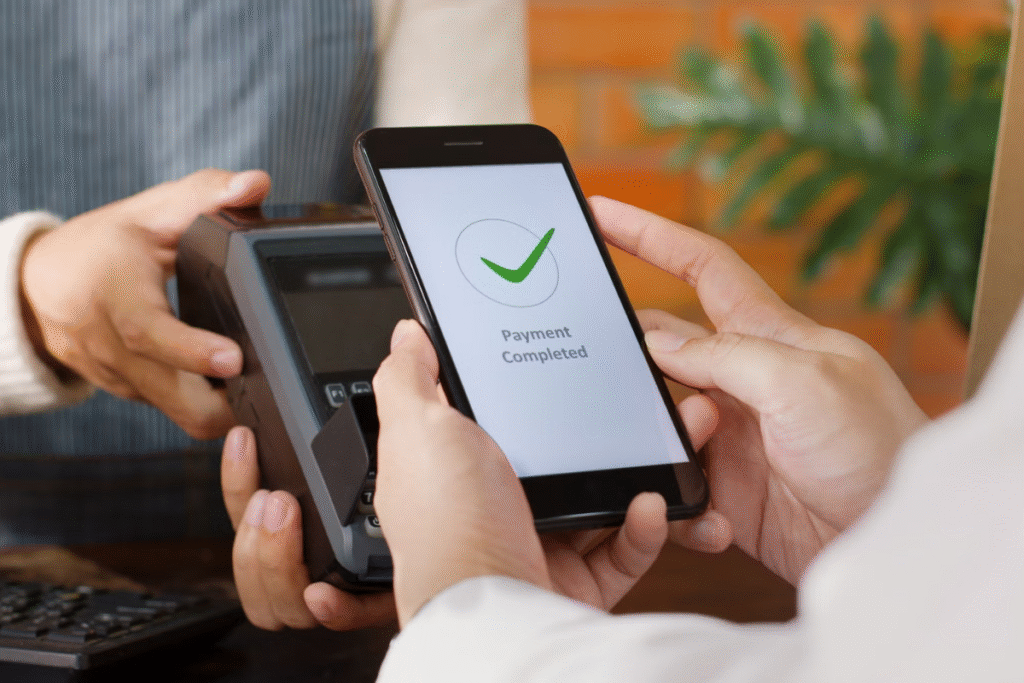E-commerce has transformed the way people shop, and with it, the way people pay. Over the past decade, we’ve witnessed a rapid evolution in payment methods, moving from simple cash-on-delivery models to complex digital-first ecosystems. Today, customers expect seamless, secure, and instant payment options—whether through a digital wallet, a credit card, or even cryptocurrency.
This article explores the latest e-commerce payment trends, why they matter for businesses, and how future innovations will reshape the global digital economy.
1. The Evolution of E-commerce Payments
Early Days of Online Payments
In the 1990s and early 2000s, e-commerce platforms relied mainly on credit cards and debit cards. While revolutionary at the time, these payment methods were often restricted by geographical boundaries, limited banking access, and concerns over security.
Rise of Third-Party Payment Gateways
Platforms like PayPal and Stripe emerged to fill the trust gap, offering secure transaction processing and protection against fraud. This not only encouraged customers to shop online but also helped small businesses expand globally.
The Mobile Revolution
With the rise of smartphones, digital wallets and mobile-based transactions took center stage. Payment apps like Apple Pay, Google Wallet, Alipay, and Paytm redefined convenience, allowing users to complete transactions in just a few taps.
2. Current E-commerce Payment Trends
The landscape is continuously shifting. Let’s explore the major trends dominating 2025:
a) Digital Wallets as the New Standard
Digital wallets have become mainstream across the globe. Whether it’s PayPal in the US, Alipay in China, Paytm in India, or M-Pesa in Africa, wallets provide:
-
Faster checkouts
-
Better security with encryption
-
Loyalty program integration
-
One-click payment experiences
For retailers, integrating wallets has become essential to reduce cart abandonment rates.
b) Cryptocurrency Payments
Cryptocurrencies like Bitcoin, Ethereum, and stablecoins are no longer niche payment methods. E-commerce platforms such as Overstock, Shopify merchants, and some airlines accept crypto directly.
Benefits include:
-
Borderless transactions with no exchange rate barriers
-
Lower transaction fees compared to traditional banks
-
Decentralization, giving customers more financial control
Challenges remain, especially volatility, regulatory uncertainty, and slow adoption in some regions. However, with the growth of stablecoins (cryptos tied to real assets like USD), many hurdles are being addressed.
c) Buy Now, Pay Later (BNPL)
BNPL solutions offered by providers like Klarna, Afterpay, and Affirm are redefining consumer purchasing behavior. Customers, especially Gen Z and millennials, prefer splitting payments into interest-free installments rather than paying upfront.
Benefits for businesses:
-
Higher conversion rates
-
Larger average order values
-
Improved customer satisfaction
d) Contactless Payments
Accelerated by the COVID-19 pandemic, contactless cards and NFC-based payments (Apple Pay, Google Pay, Samsung Pay) are now the norm. Consumers demand speed and hygiene, making this a must-have option for e-commerce that extends into offline retail.
e) Cross-Border Payments
Global e-commerce expansion demands multi-currency support. Platforms that allow local payment methods (e.g., iDEAL in the Netherlands, Boleto in Brazil, WeChat Pay in China) significantly boost international sales.
f) AI and Biometrics in Payments
Security and personalization are merging with AI-driven fraud detection and biometric authentication (fingerprint, face recognition, voice). These tools reduce fraud risk while improving customer trust.
g) Subscription and Recurring Payments
Streaming platforms like Netflix, Spotify, and Amazon Prime normalized subscription models. Now, industries from fitness apps to fashion brands are embracing recurring payments, ensuring steady revenue streams and customer retention.
3. Regional Payment Preferences
North America
-
Dominated by credit cards, PayPal, BNPL, and growing crypto adoption.
-
BNPL and digital wallets are increasingly preferred by younger audiences.
Europe
-
Strong adoption of BNPL and open banking solutions.
-
Countries like Sweden lead in cashless transactions.
Asia-Pacific
-
Digital wallets dominate (Alipay, WeChat Pay, Paytm).
-
Mobile-first economies with high QR code usage.
Africa
-
Mobile money services like M-Pesa revolutionize payments for the unbanked population.
-
Rapid fintech innovation due to limited banking infrastructure.
Latin America
-
Strong adoption of localized payment systems like Boleto and Pix in Brazil.
-
High growth potential for digital wallets and crypto payments.
4. Challenges in E-commerce Payments
While innovations are exciting, businesses must address challenges such as:
-
Security & Fraud Risks – Cyberattacks are increasing as digital payments grow.
-
Regulatory Compliance – Adapting to global rules like PSD2 (EU), GDPR, and country-specific crypto regulations.
-
Transaction Fees – High charges from banks and intermediaries can hurt margins.
-
Payment Declines – Failed transactions due to outdated systems frustrate customers.
5. The Future of E-commerce Payments
Looking ahead, these developments will shape the industry:
a) Central Bank Digital Currencies (CBDCs)
Governments worldwide, including China (Digital Yuan) and Europe (Digital Euro), are experimenting with CBDCs to provide stable, government-backed digital currencies for everyday use.
b) Blockchain Integration
Beyond crypto, blockchain technology is enabling faster, transparent, and tamper-proof transactions. Smart contracts may revolutionize how payments and supply chains operate.
c) Unified Super Apps
E-commerce, payments, and social media are converging. Super apps like WeChat and Grab already combine messaging, shopping, and payments in one ecosystem.
d) Voice and IoT Payments
“Alexa, order groceries.” – Voice-assisted payments are expanding. Similarly, IoT devices like smart refrigerators could initiate automated payments in the future.
e) Sustainable Payments
Consumers are increasingly eco-conscious. Payment platforms may soon offer carbon-neutral transactions, donating fractions of transaction fees to sustainability projects.
6. Why Businesses Must Adapt
Businesses that fail to adapt risk losing customers to competitors who offer modern payment methods. Key reasons to embrace these trends:
-
Customer loyalty – Offering flexible, secure payments builds trust.
-
Global reach – Accepting diverse payment methods attracts international buyers.
-
Reduced cart abandonment – A smooth checkout experience keeps sales flowing.
-
Revenue growth – With BNPL, wallets, and subscriptions, businesses can capture more sales opportunities.
7. Best Practices for Businesses
-
Offer multiple payment options – Don’t rely on just cards. Include wallets, BNPL, and local methods.
-
Ensure security – Use SSL, PCI compliance, and fraud-detection tools.
-
Mobile-first checkout – Optimize payment flow for smartphones.
-
Transparent policies – Be clear about fees, refunds, and installment terms.
-
Stay updated – Keep track of fintech innovations and adapt quickly.
Conclusion
E-commerce payments are no longer just about completing a purchase—they’re about creating trust, convenience, and global accessibility. From cryptocurrency and BNPL to digital wallets and biometrics, the future of payments is fast, secure, and customer-centric. Businesses that adopt these trends will not only survive but thrive in the ever-competitive online marketplace.
FAQs
What are the most popular e-commerce payment methods in 2025?
Digital wallets, BNPL (Buy Now, Pay Later), credit/debit cards, and crypto are among the most popular.
Why are digital wallets growing so fast?
They provide convenience, faster checkouts, better security, and integration with loyalty rewards.
Is cryptocurrency safe for e-commerce transactions?
Yes, but volatility and regulations remain challenges. Stablecoins and secure blockchain solutions are making crypto safer for e-commerce.
What is BNPL, and why is it popular?
BNPL (Buy Now, Pay Later) allows customers to split payments into smaller installments, making shopping more affordable and boosting sales for merchants.
How can small businesses adapt to these payment trends?
By integrating diverse payment gateways, ensuring mobile optimization, and partnering with fintech providers, small businesses can compete effectively.
Will traditional payment methods like cash-on-delivery disappear?
While declining, cash-on-delivery still exists in developing markets. However, digital-first methods are becoming the global standard.

